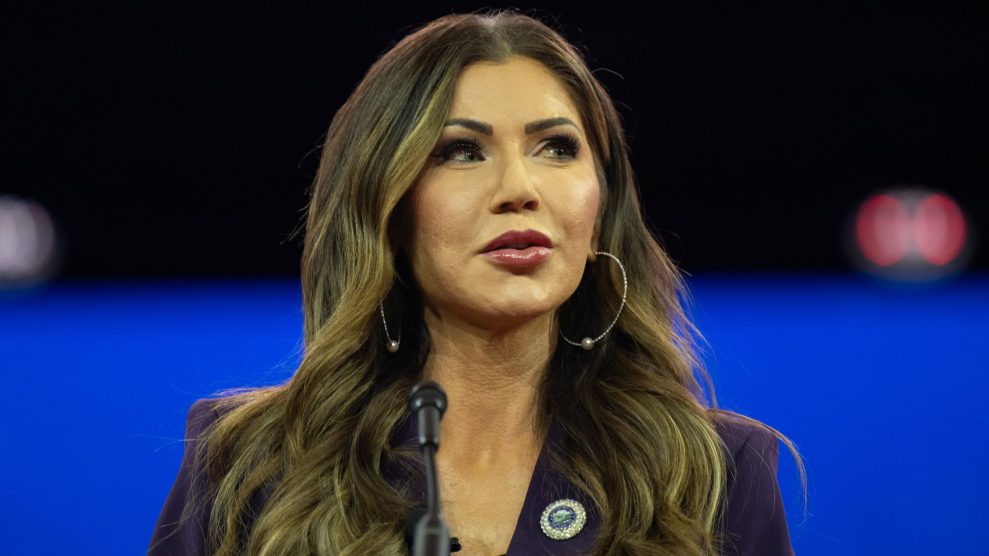For more resources on mining, see our resource guide.
To those in the mining business, the 38-mile stretch of Nevada called the Carlin Trend, near the Independence Range, holds as much promise as the Vegas strip does to a gambler on a roll. For the Carlin is a mother lode, accounting for nearly a third of the gold mined in the United States in 1993.
But instead of grizzled prospectors with pickaxes, this 1990s gold fever features multinational mining corporations wielding technology of devastating efficiency. In 1993, almost three times as much gold was mined in the United States as in 1852, the peak year of the Gold Rush. The United States now ranks second behind South Africa among gold-producing nations. Nevada, the heart of the new mining boom, accounted for 63 percent, or 6.7 million ounces, of the 1993 take–a take worth $2.4 billion.
The same revolutionary procedures that let mining companies extract gold in such quantity, however, are degrading the environment at an unprecedented rate, leaving behind open pools of cyanide, contaminated waterways, vast tracts of dried-out land, and man-made toxic lakes.
And because of the mining industry’s political clout, state and federal agencies are reluctant to enforce the few environmental regulations currently on the books. Moreover, an archaic law meant to lure 19th-century prospectors westward allows large mining companies, many foreign owned, to buy mineral-rich land for $5 an acre, and to pay no taxes at all on minerals they take from public lands.
The new gold rush can be traced back to cyanide “heap leaching,” a process pioneered by the U.S. Bureau of Mines in 1967. This modern-day alchemy permits ore that would have been considered worthless a few decades ago to be mined on a massive scale. But heap leaching carries a high price: The resulting pools of cyanide kill thousands of migratory birds that drink from them; leaks from these pools also threaten groundwater.
The special liners required beneath ore heaps to prevent leaks have a tendency to rip and tear. At the Independence Mine (owned by a Luxembourg-based company) in Nevada, for example, solution has been leaking out of the collection pool since the mine’s inception in 1982. It now leaks at the rate of 2,800 gallons per minute, threatening the Humboldt River and a creek containing an endangered trout species. A pump-back remediation system now recycles the solution, but some worry that the site may have to be maintained in perpetuity.
Though the Independence Mine situation is perhaps the worst, it is not unique–and cleanup is costly. The Mineral Policy Center, a Washington, D.C.-based environmental group, estimates that cleaning up abandoned mines and the 10,000 miles of streams polluted by mine waste will cost taxpayers $32-$72 billion.
Another devastating new mining procedure is “dewatering,” where mining companies pump water not only from the mining pits that run deeper than the water table, but also from the surrounding area, creating enormous tracts of arid land. For two mines in the Carlin Trend alone, the dried-out area already measures nearly 350 square miles. The Bureau of Land Management, which oversees mining on public land, anticipates that at one mine, at least 330 acres of streams and springs will dry up. With 10 major gold mines currently dewatering, the water table is expected to take up to 100 years to recover.
Also, abandoned mining pits slowly refill with water to become massive “pit lakes.” But rock previously unexposed to air can leach into the water, forming a toxic brew. “They don’t know what to do [with the lakes],” says Jim Lyon of the Mineral Policy Center. “There are a lot of ticking time bombs out there.”
Why are mining companies able to wreak such environmental havoc? A source at the BLM says, “There are no teeth to any of our regulations. We have no authority to fine or even to shut down an operation. You can issue a notice of noncompliance, but that’s all it is–a piece of paper that doesn’t mean anything.”
Others blame lax state agencies and the relatively quiet Nevada citizenry, many of whom are mine employees earning some of the highest pay in the state. The $93,530,000 Nevada received in mining taxes in 1993 and the $164,200 Gov. Bob Miller received from the industry during his recent re-election campaign are certainly incentives to look the other way. As a federal agent explains, “Here in Nevada people live by a different golden rule: He who has the gold, rules.”
The Mining Law of 1872 let prospectors mine minerals on public land for free and let them buy, or “patent,” the land, including all minerals beneath it, for $5 an acre. Under the same archaic law, still in effect, the government cannot receive royalties when companies mine claims on public land. Private landowners, in contrast, routinely charge companies that extract minerals from their land.
Even more obscene is the fact that the law doesn’t require the patent holder to mine the land. In 1986, one mining company patented 17,000 acres in Colorado for $42,500 and a month later resold the land to oil interests for $37 million. In reviewing 20 other patents made since 1970, the General Accounting Office discovered that the government had received less than $4,500 for land now worth up to $47.9 million.
In the fall of 1993, the House of Representatives passed a bill to end patenting and requiring mining companies to pay an 8 percent royalty to mine on public lands. (In contrast, the oil, coal, and gas industries pay a 12.5 percent royalty for use of federal lands.) But the reform effort was scuttled in the Senate by six Westerners (see photos). Said Nick Rahall (D-W. Va.), sponsor of the House bill, “In the final analysis, the mining industry, guided by greed and guile, did not want a bill of any kind.”
Congress did place a moratorium on patents for one year. While this will not stop mining on public lands or the filing of new claims, it does preserve Congress’ option to impose royalties. The bad news: Of 613 patent applications pending, 422 will be processed, giving mining companies title to federal lands holding minerals worth an estimated $21 billion.
With the future of patenting in doubt, mining companies are turning to land exchanges with the BLM as another way to privatize public land rich in minerals. As the BLM often sets a price on its land based only on the surface (usually grazing) value, mining companies can trade hundreds of acres of their useless land to the BLM for smaller properties that are mineral-rich and far more lucrative.
Considering that gold currently mined is neither strategically nor industrially important (85 percent of it is made into jewelry), sacrificing land and wildlife in its pursuit is all the more senseless. And time for action is quickly running out.
Up in Jerritt Canyon in the Independence Range, where freeway-size exploratory roads carved deep into the mountains are dotted with drilling rigs and haul trucks, one lone aspen stands, a single message carved into its trunk: Goodbye.
Jessica Speart is a Connecticut-based environmental writer.












